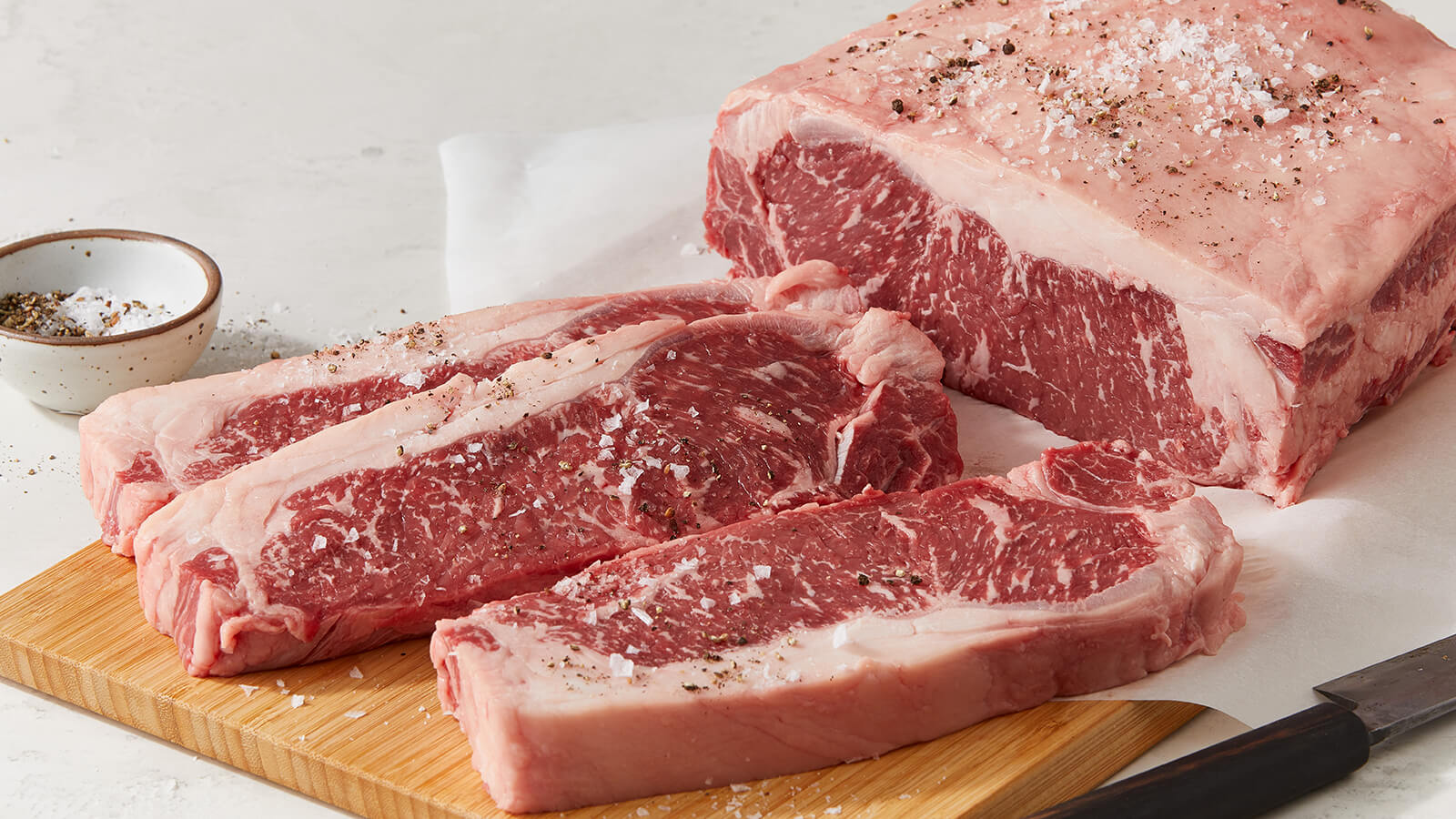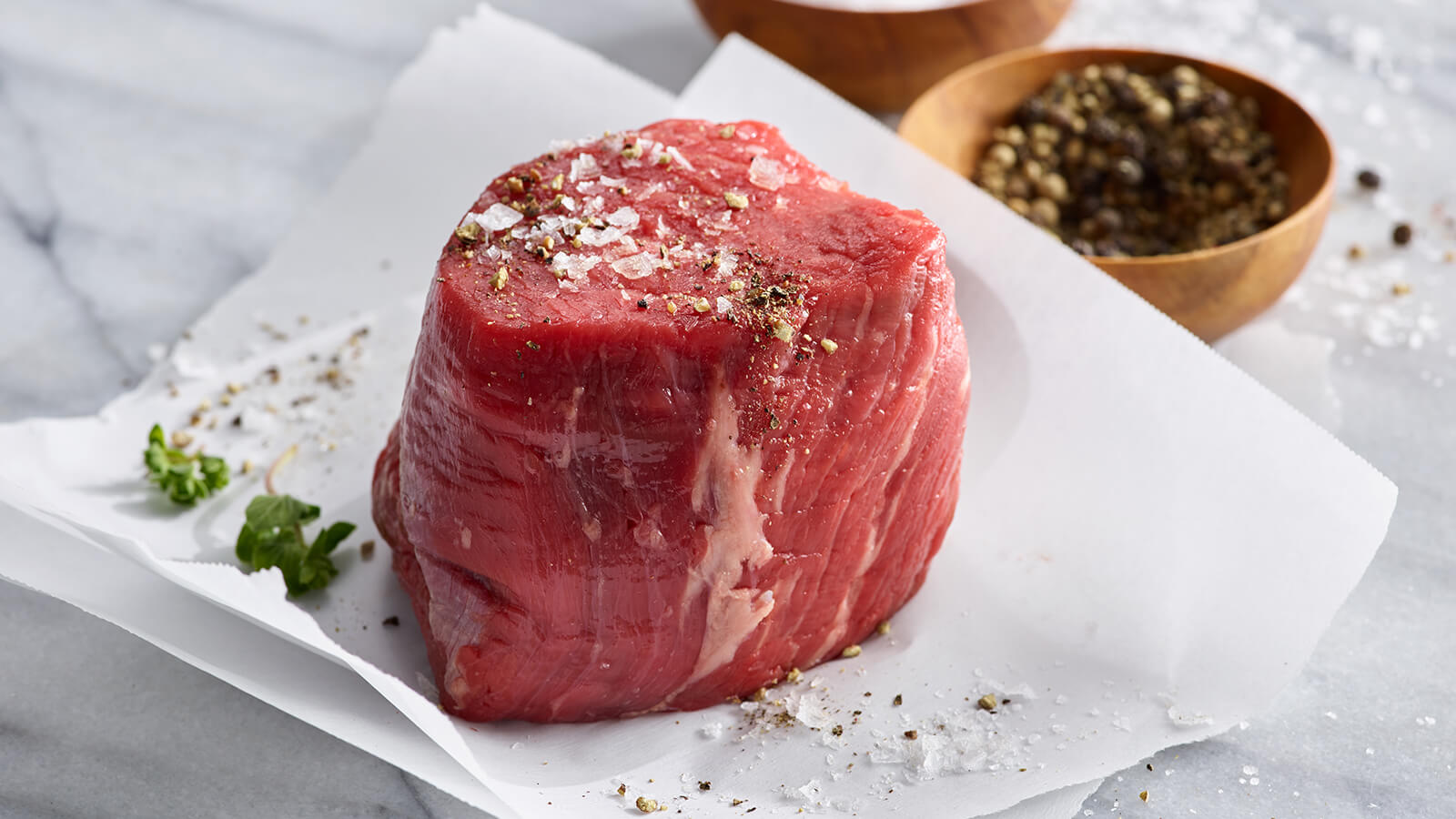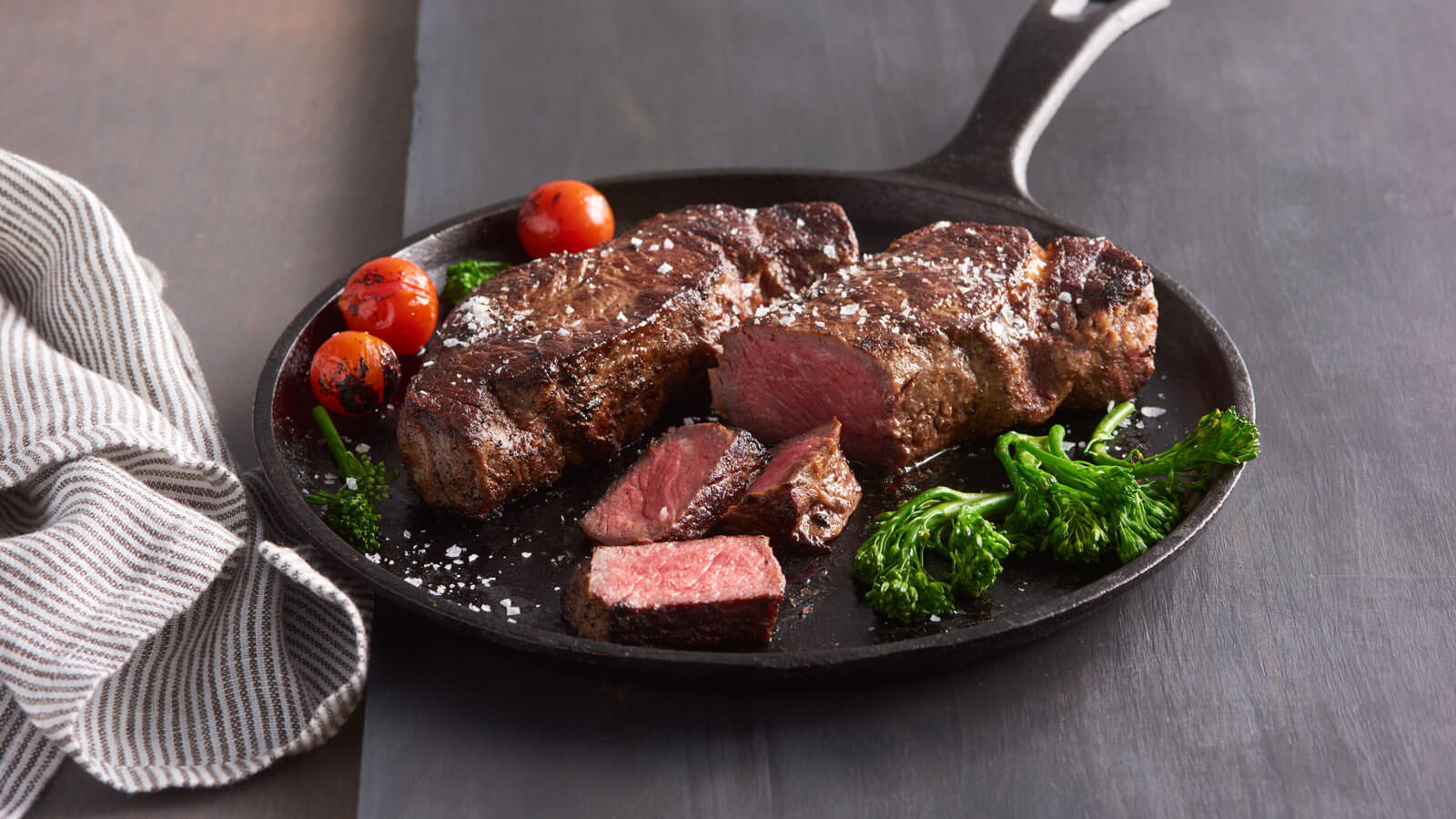Whether it’s perfectly grilled or cooked in a skillet, USDA Prime is always delicious.
The two most popular steak-cooking techniques are outdoor grilling (our favorite) and stovetop cooking, usually in a heavy-bottomed or cast iron skillet. Both techniques create a mouthwatering browned exterior and deep, meaty flavor.
Not sure which cuts to grill? For a juicy, full-flavored entrée, choose ribeye, porterhouse or any bone-in cut. These cuts have the most marbling and stay tender when grilled. For something quick-cooking, try a thinner cut like skirt steak or flank. If you’re leaning towards lean, opt for filet mignon, whole beef tenderloin or New York strip.
Check out our “Meet the Curators” video to learn more about how we bring you the best selection of quality beef. We asked Director of Meat and Seafood Peter Mayes for the 411 on top-notch beef, along with some of his go-to cooking methods for our favorite cuts.
American Wagyu Cooking Tips
Japan to America Wagyu, meaning "black cow," was raised exclusively in Japan for hundreds of years. Our American Wagyu boasts an impressive genetic heritage and a meticulously slow feeding program that is free of growth hormones. Our Wagyu cuts are gorgeously marbled and deeply flavored with melt-in-your-mouth tenderness. Our New York strip is our most popular cut, while our ribeye—the premier cut—is as delectable as any delicacy.
If Wagyu is new to you, it’s important to read our cooking tips to ensure the tastiest experience from this incredibly tender beef.

Seasoning. Because Wagyu is a very flavorful cut, season it with salt and pepper only. There’s no need to overwhelm it with marinades or heavy sauces.
Preparation. Take the Wagyu out of the refrigerator 30 minutes before cooking. This will help your steaks cook more evenly throughout.
Cooking. Preheat a cast-iron pan over high heat with a small amount of oil or butter (the steak will render a lot of fat on its own). Cook 3-4 minutes per side.
Doneness. Cook to medium-rare. Anything beyond that will negatively impact the inherent flavor and texture of Wagyu.
Resting. Let your steak rest for 5-10 minutes before serving. This will allow the meat fibers to relax and reabsorb the juices.
Tips for Cooking USDA Prime Beef
Whether you're grilling your steak or pan-searing it, here are a few tips to ensure a great entrée every time.
Season less. Coarse salt, freshly cracked black pepper and maybe a pat of butter for finishing—that’s it. Let the steak speak for itself. Flank steak is an exception, and it takes beautifully to marinating. Just be sure to pat the steak dry with paper towels before cooking to aid browning.

Let it sit. After seasoning your steak, let it stand at room temperature for 15 to 30 minutes before cooking. This helps it cook more evenly.
Keep it hot. For the best browning, use a very hot skillet or grill. Avoid continuously turning the steak so a crust can form. This will also allow the steak to be flipped without sticking, as the crust will create a barrier between the meat and the cooking surface.
Time it right. Allow 3 to 4 minutes per side for a 1-inch-thick steak. Make adjustments for steaks that are thicker or thinner.
Feel it out. Steaks are often too thin for an instant-read thermometer to suffice, so you’ll have to rely on your sense of touch. As the steak cooks, it releases moisture, and the meat firms up. Press the steak with your forefinger to get a reading. Rare steak feels slightly soft, medium is somewhat resilient and well done is firm to the touch.
Take a break. Always allow steak to rest for a few minutes before serving so the juices (which have been moving around due to the heat) can redistribute themselves throughout the meat.

The Finishing Touch
Just before serving, sprinkle a pinch of coarse, natural finishing salt on top of your steak. This cuts through the steak’s richness while adding texture and flavor. Our current favorite is Jacobsen Salt Co. Harvested from the Oregon Coast, it exquisitely brings out the most flavor in all your proteins. All you need is a pinch or two for perfect seasoning.
How To Cook The Perfect Ribeye
Marbling matters! Our ribeye steaks are naturally high in intramuscular fat, making them ideal for grilling. The result is tender, incredibly juicy steaks.
Season Properly: Season your steak early–30 minutes before cooking, pull the steak out of refrigeration, pat it dry and season liberally on all sides. The Fresh Market Signature Pepper Blend is a great option, but our favorite seasoning for our ribeye is simply using kosher salt and freshly ground black pepper since the quality of the meat stands out on its own without additional seasonings or spices.
Bone-In or Boneless: A bone-in ribeye takes longer to cook than a boneless ribeye. We recommend using a probe thermometer to check doneness.

Cooking Method: Use cast iron for stovetop or grill your ribeye–high heat is key.
Stovetop: Use your heaviest pan, preferably cast iron. Preheat over high until pan is slightly smoking (be sure to turn on any exhaust fans). Add a teaspoon of high-heat cooking oil and carefully place steak on pan. It should sizzle immediately; if it doesn’t, your pan is not hot enough. Cook undisturbed for 3-5 minutes until surface is deep brown and the steak releases easily. Turn it over and cook an additional 3-5 minutes to your desired doneness.
Grilling: Grill on high heat until hard sear forms on one side. Turn and sear on other side. Move steak to a lower temperature zone on the grill to finish cooking for more doneness without burning. Optional: Add a pat of butter immediately upon removing the steak from the grill.
Reverse Sear for Larger Cuts: For thicker steaks (over 1.5 inches) and tomahawk cuts, use a reverse-sear method (i.e., cooking at very low heat until the interior temperature reaches your desired doneness), then finish it with a sear. See these steak and prime rib recipes for additional instructions.
Butter Baste (optional): For stovetop method, we’re fans of finishing with an herby, garlicky butter baste. Add a tablespoon or two of butter, a few sprigs of thyme and a clove of garlic (flattened with a knife, not peeled). Using a large spoon, baste the steak with the herb butter for 30 seconds for additional flavor, crust and color.
Temperature: Touch test may work with a lot of practice but use a probe thermometer for most accurate results—Rare: 125°F, Medium-rare: 130°F, Medium: 140°F, Medium-well: 150°f, Well-done: 160°F+
Rest: Let the steak rest for at least 5-10 minutes before serving. Resting allows the steak to redistribute the juices evenly throughout. Exception: Reverse-seared steaks do not need to rest before serving.
Outdoor Grilling

Grilled Steak: Season steak with coarse salt and freshly cracked black pepper. Prepare the grill for direct cooking over high heat (around 550°F). Place steaks on the grill and close the lid. Cook until the underside is nicely browned, 3 to 4 minutes.
If there are flare-ups, move the steak to an area not directly over the coals. Flip the steak over, cover and continue cooking to your desired doneness, 3 to 4 minutes more for medium-rare. Remove the steak from the grill and let stand for 3 to 5 minutes before serving.
Indoor Searing

Cast Iron Steak with Jus Butter: Season steaks generously with coarse salt and freshly cracked black pepper. Turn your stove exhaust fan on high. Heat a large, heavy skillet (cast-iron is best) over medium high heat for at least 2 minutes. There is no need to add oil to the skillet. Add steaks to the skillet, being sure not to crowd them. You will probably only be able to fit 2 steaks (or 4 filet mignons) in the average skillet.
Cook until the underside is nicely browned, 3 to 4 minutes. Flip the steaks and continue cooking to your desired doneness, 3 to 4 minutes more for medium-rare. Add 1 to 2 tbsp unsalted butter to the top of the steak during the last minutes of cooking. Remove the steaks from the skillet and let rest for 3 to 5 minutes. Pour pan sauce over the steaks and serve.
